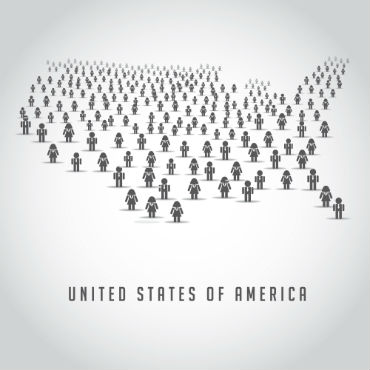Census walks back tech solution to population count

The Census Bureau expects to nearly double the number of in-person household visits -- and in turn, the total burden hours -- during its critical dress rehearsal test.

After cancelling another program designed to reduce costs, the Census Bureau expects to nearly double the number of in-person household visits during its critical dress rehearsal test.
Although the bureau now plans to pare down the full 2018 end-to-end test operations to only one site, it still plans to conduct the door-to-door count of addresses at all three. The work required to do so will now practically double, according to Census's most recent estimate.
The reason for the leap in burden hours is due to the cancellation of Census's active block resolution program, a way of validating address data without the use of human canvasser.
Census had teased the prospect of an increased in-field workload earlier in the year due to budget issues, but had not specified technical issues with the program, in which office staff were supposed to make determinations about population shifts identified in an earlier phase of the census response by making a "virtual canvass".
But after "experiencing significant issues with productivity and quality control in the active block resolution phase," as the bureau termed it in an Aug. 10 Federal Register notice, Census will no longer pursue the more virtualized enumeration method as a way to count the population, for the 2018 test or the 2020 main event.
Due to these technical issues, households originally counted through active block resolution will now be added back into the in-field workload.
The original plan was to visit 43,965 households in Washington, Rhode Island and West Virginia via in-field canvassing. The bureau budgeted 3,664 hours for that effort. Now, however, the bureau estimates it will visit 85,093 housing units, and anticipates the effort will require 7,091 work hours.
Terri Ann Lowenthal, who has provided census oversight as a congressional aide, presidential transition team member and outside consultant on decennials dating back to the 1990 count, told FCW the short-term effect is that "this is going to increase the cost."
Lowenthal, also a former co-director of the watchdog group the Census Project, added the longer-term effect is that the changes made to the 2018 test will likely reflect those in the 2020 main event.
"The only thing they want to do between a dress rehearsal and the census is... refinement," she said. "Congress already is holding the purse strings tight, and I can't imagine appropriators will be looking kindly on any modifications that reduce those lifecycle cost savings."
The decision to default to the proven door-to-door enumeration helps ensure the accuracy of the count, especially in hard-to-reach rural, urban and minority communities, but Lowenthal questioned whether Congress will appropriate the money necessary so Census isn't forced to "cut corners" on the effort.
"This is the first Census in modern history where Congress has put a cap on the overall cost of the Census at the beginning of the decade," she said. "We all know the IT system is well above its cost estimate... Is Congress going say, 'oh darn, you tried, and now we're at the end of the decade, and you're going to need more than you thought you would, and here it is'?"
An additional challenge facing Census -- as well as Congress -- is that there is not an accurate, updated lifecycle cost estimate. Census plans to release an updated lifecycle cost estimate later this fall, along with a version 3.0 of its operational plan to reflect recent changes.
"My concern is that Congress has pulled the budget reins so tight, and the administration is going down the same path, that there won't be enough money to do a thorough job in the field," she said. "I don't see evidence yet, and therefore I don't have confidence... the Census Bureau will have the resources it needs to do a thorough job."
The responsibility of Congress is not just to throw more money at the Census to keep programs afloat, Lowenthal pointed out. "Congress needs to step up to the plate and do some deeper dives on oversight," she said.
Given the [continued] lack of a permanent director, resource constraints, technical and cybersecurity challenges and a public wary of large-scale government programs, "we could be headed for a perfect storm," said Lowenthal.
"Congress, because they have constitutionally responsibility for the Census, will have to take steps to make sure we're not facing a failed Census, which could lead to a constitutional crisis," she added. "And I don't say that lightly."


